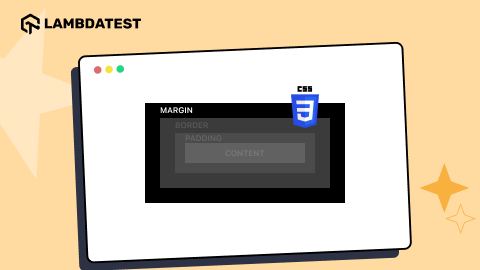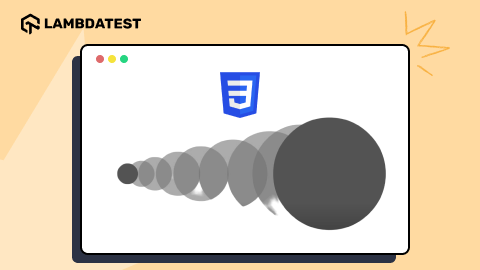Top 6 HTML5 Trends For Webmasters [2024]
Ishant Agarwal
Posted On: March 11, 2024
![]() 39655 Views
39655 Views
![]() 5 Min Read
5 Min Read
There are more than 1.8 Billion distinct websites running right now. The whole world is running on webpages and these webpages are running on HTML. Hypertext Markup Language is one of the oldest and most used programming syntax and it also one of the most dynamically evolving one.
The latest avatar of the language dubbed HTML5, was a game changer in many ways. Many things which were earlier not possible with HTML became possible with the arrival of HTML5. The language because more robust, with lower dependencies on supporting languages and tools. It started getting more native support and a faster pace of development. Various attractive features were added in this new member of HTML family which were appraised by many developers across the globe.
After W3C released HTML5 in 2014, HTML5 gained popularity among web developers because of its seamless and superior experience across all devices and screens. It became core technology markup language.
If you want to know about remarkable properties of HTML5 which makes it peculiar than any other languages then you’re at right place. Here are some popular trends of HTML5 which makes it the better choice for developers to structure and present content on World Wide Web.
1. Cross-Platform Code Portability
“Write once, deploy anywhere capability” is a famous saying for HTML5 which is agreed by all developers across the globe. The capability which took HTML5 to great heights is its cross-platform code portability. This eased the work of developer as now a single code written by the developer using this markup language is compatible with every browser irrespective of its version and specifications, which was earlier not possible with older versions of HTML.
2. Multimedia and Interactive Media Support
Remember those days when you would have to take help of Flash or Java Servlet Pages to create interactive multimedia web apps. That all changed over time. Now you can build beautiful interactive multimedia websites through native web browser based technologies. HTML5 based video players, WebRTC based communication apps, CSS animations, etc has taken over. And if you need something even more then there is JavaScript to rescue.
Nowadays, with the advent of HTML5, developers can effortlessly create multimedia-rich web applications without relying on external plugins like Flash or Java Servlet Pages. HTML5-based video players, WebRTC-based communication apps, CSS animations, and more have become the norm. And for comprehensive testing across different browsers and devices to ensure seamless user experiences, they can leverage cloud-based testing platforms like LambdaTest.
LambdaTest is an AI-powered test orchestration and execution platform that offers a comprehensive platform for cross browser testing, allowing developers to test their websites or web applications seamlessly across various browsers and devices. With LambdaTest, developers can ensure that their HTML5-based websites deliver a consistent and flawless experience to users, regardless of the browser or device they’re using.
By providing a cloud-based infrastructure for testing, LambdaTest simplifies the testing process and accelerates the development life cycle, ultimately helping developers in delivering high-quality web experiences.
3. Geolocation Support
Geolocation support was introduced in the world of web development with HTML5. Now you can easily share your location with your favourite websites as many websites require your location so that they can deliver the best result according to your location. This feature of HTML5 also helped in finding local business and show your location on a map.
4. New Elements
With older versions of HTML developers used to insert sound through midi music which was a great deal in itself, but with the arrival of HTML5, this can be easily done as many new elements were introduced. <audio> element to add audio file, <video> element to add video file, <canvas> element to draw graphics with various shapes and colors.
By default, a canvas is a rectangular area but you can adjust its size as per your requirement. This is shown in the following tag.
|
1 |
<canvas id=”newCanvas” width=”400″ height=”200″></canvas> |
Semantic elements such as <form> , <table> , and<article> were also introduced in HTML5. HTML5 Semantic tags come into the role when there is a need to describe the meaning of content present within HTML document making it clearer for both developer and browser.
5. Storage
In older versions, only browser cache can be used as temporary storage. But in HTML5 application cache, web SQL database and web storage are used to store data. This makes it more efficient and provides more storehouse for data.
6. Long Scrolling Websites and Parallax Effects
One of the popular trends of HTML5 is long scrolling websites and parallax effects. In the old days when there were single-page sites, developers used to think that long scrolling site can be a misdeed for a developer but with ever-changing web developing industry long scrolling sites came as a windfall for the web. With long scrolling sites, more amount of information can be delivered to the visitors which was earlier not possible on single page site. This also made websites more compatible with small screen devices such as mobiles and tablets as because of small screen size only limited amount data is shown to a user.
Conclusion
Now you can clearly distinguish HTML and HTML5, therefore you need to update your knowledge base with time. Being an open source language makes it reachable to every other developer and hence it has large developer community. At long last, I want to say though HTML5 opened endless opportunities for developers, there are still things left which are undiscovered.
Got Questions? Drop them on LambdaTest Community. Visit now












